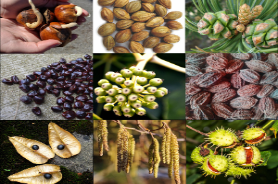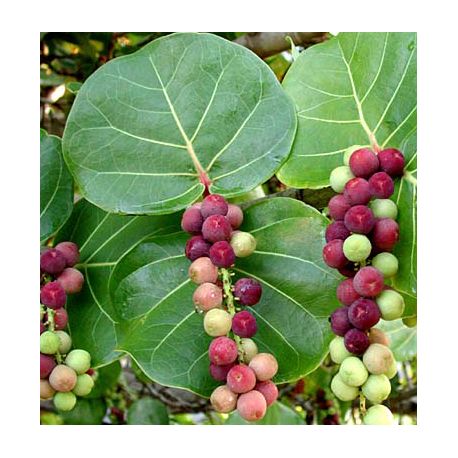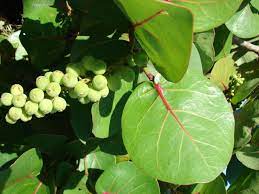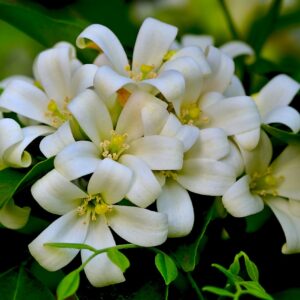Here is some detailed information about Ficus cocoloba:
- Morphology: Seagrape is a large evergreen shrub or small tree that can reach a height of up to 50 feet (15 meters) in ideal conditions. It has a round or spreading crown and a dense, symmetrical growth habit. The leaves are thick, leathery, and glossy, with a wavy margin and a characteristic lobed shape resembling a grape leaf. The leaf size can range from 6 to 10 inches (15 to 25 centimeters) in diameter.
- Flowers: Seagrape produces small, inconspicuous flowers that are arranged in round clusters known as inflorescences. The flowers are greenish-yellow in color and are not particularly showy. They are followed by the development of fruit.
- Fruit: The fruit of Ficus cocoloba is one of its most distinctive features. The mature fruit resembles a cluster of grapes, hence the common names “Seagrape” and “Baygrape.” The fruit is round or slightly oval and can grow up to 1 inch (2.5 centimeters) in diameter. When ripe, the fruit turns purple or reddish-purple and has a sweet, tart flavor. It contains a large seed surrounded by a thin layer of edible pulp.
- Habitat and Tolerance: Seagrape is well adapted to coastal environments and can tolerate a range of conditions, including salt spray, sandy soils, and strong winds. It is often found growing along sandy beaches, coastal dunes, and near shorelines. Seagrape has a moderate to high drought tolerance and can survive in both full sun and partial shade.
- Ecological Importance: Ficus cocoloba plays a crucial role in coastal ecosystems. Its dense foliage provides shade and shelter for other plants, as well as nesting sites for birds. The fruit is an important food source for a variety of wildlife, including birds, bats, and small mammals. Seagrape also helps stabilize coastal soils and prevent erosion with its extensive root system.
- Cultivation: Seagrape is commonly cultivated as an ornamental plant in tropical and subtropical regions. It can be grown as a specimen tree, a hedge, or in containers. It requires well-drained soil and regular watering, especially during dry periods. Pruning is recommended to maintain a desirable shape and size.
- Medicinal and Other Uses: Various parts of Ficus cocoloba have been used in traditional medicine. The leaves, bark, and fruit have been employed for their purported medicinal properties, including as a treatment for diarrhea, skin conditions, and respiratory ailments. However, it’s important to note that scientific evidence supporting these uses is limited, and consulting a healthcare professional is always advisable.














Reviews
There are no reviews yet.